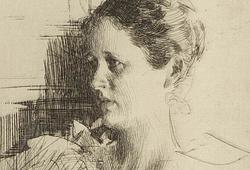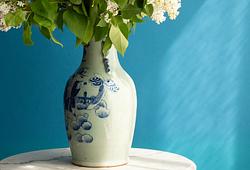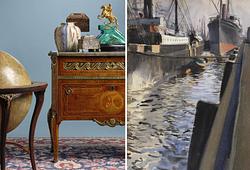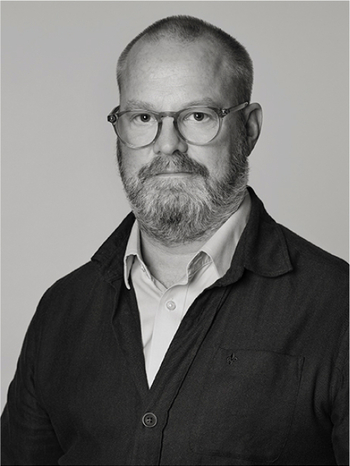Anders Zorn
Anders Zorn, "Fredrik Martin"
Etching, 1907, signed in pencil. P. 11.9 x 17.8 cm.
Not examined out of the frame.
Literature
Asplund 210, Hjert & Hjert 137.
More information
Fredrik Robert Martin, born on 8 May 1868 in Stockholm, died in 1933, was an art industrial collector, particularly knowledgeable about Oriental art and culture, brother of Hugo Martin, cousin of Carl Roland Martin, and great-grandson of Roland Martin.
Martin, who obtained a doctorate in philosophy in Vienna in 1899, served as an acting curator at the Swedish Museum of Natural History from 1890 to 1902 and as dragoman at the Swedish legation in Constantinople from 1904 to 1908. He then settled in Florence. Martin became known for the interesting and rich collections of Oriental art and crafts that he amassed with insight and boldness during extensive and prolonged travels (to Siberia 1891-92, European Russia, the Caucasus, and Central Asia 1894-95, Egypt, Asia Minor, and Turkey 1895-96, Russia, Turkey, and several other countries with state funding from 1898-1903 for the purpose of seeking out Swedish antiquities, and in later years, constant travels in Europe, Asia Minor, and Egypt).
Martin's earlier collections have partly been transferred to the Nationalmuseum, the ethnographic department of the Swedish Museum of Natural History, and to private collectors (Professor Hjalmar Sjögren, Director Carl Robert Lamm, among others). They were largely exhibited at the Stockholm Exhibition in 1897 in a special pavilion. Martin's later collections, which include Sasanian metal vessels, Egyptian ceramics from all periods, valuable Arabic and Persian manuscripts and miniatures (the oldest from the 7th-8th centuries), bookbindings, older Oriental carpets and other textiles, earth-found Chinese bronzes, and Seljuk jewellery, were partly displayed at the major exhibition of Islamic art in Munich in 1910, for which Martin was a commissioner and for which he also, along with Bürkel and Professor Friedrich Sarre, prepared the plan. Together with Sarre, Martin published a magnificent illustrated work with text about the exhibition, Meisterwerke muhammedanischer Kunst. A larger work in English, Persian Miniatures Art, was also published in 1912. The Ethnographic Museum in Stockholm manages over 1,700 objects that Martin collected during his travels.
Artist
Anders Zorn, born in Mora in 1860, showed artistic talent from a young age. In 1875, he traveled to Stockholm and became a student at the then Slöjdskolan (now Tekniska högskolan) in Stockholm, and shortly after, he joined the Royal Academy of Fine Arts. Initially, Zorn had aspirations of becoming a sculptor, but soon watercolor painting took over, becoming his primary medium until 1887. At the student exhibition in 1880, Zorn had his breakthrough with the watercolor painting "I sorg." The following year, he gained international acclaim as a portrait painter. His watercolor painting reached its pinnacle during this period, and his most famous work from this time is "Vårt dagliga bröd” from 1886. Shortly thereafter, Zorn transitioned to oil painting, which was met with immediate success. Zorn's reputation mainly rested on his portrait art, and he portrayed many notable figures, including presidents. For instance, he created an etching of Theodore Roosevelt. His etchings significantly contributed to his success. In the late 1880s, Zorn began working in the genre that would increasingly become his trademark: nude figures in outdoor settings. He had long been fascinated by the movement of water and the reflections of light on its surface. Now, he added the complexity of placing a model near or in the water, aiming to depict a synthesis between nature and humanity. In 1896, Zorn and his wife moved back to Sweden and settled in Zorngården in Mora. This move sparked a renewed interest in his homeland, which would be reflected in his future paintings. Among the artist's scenes from the Mora region, portraying its local customs and ancient traditions, "Midsommardansen" holds the highest value according to Zorn himself. Today, the painting can be found at the National Museum.
Read more
































